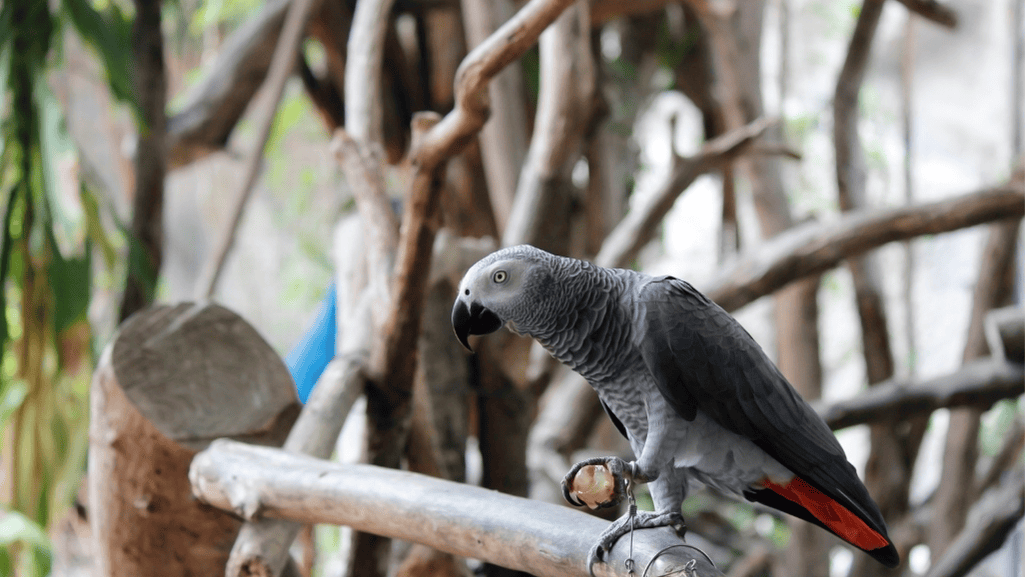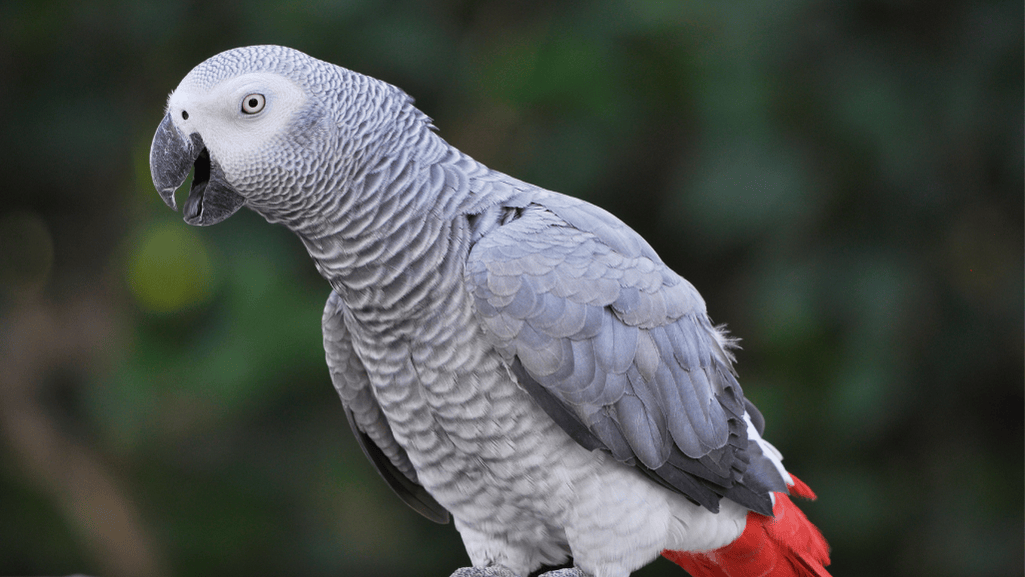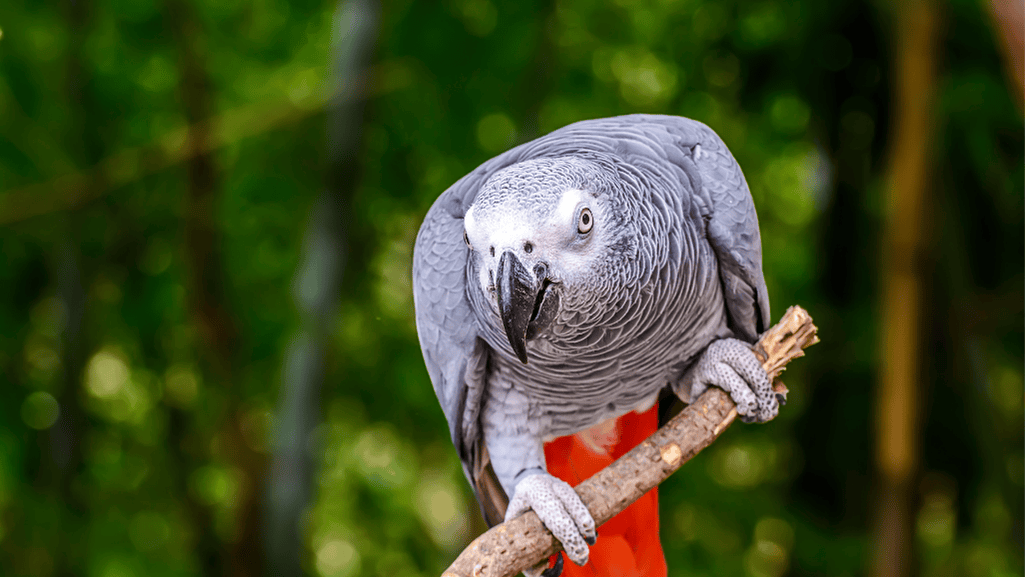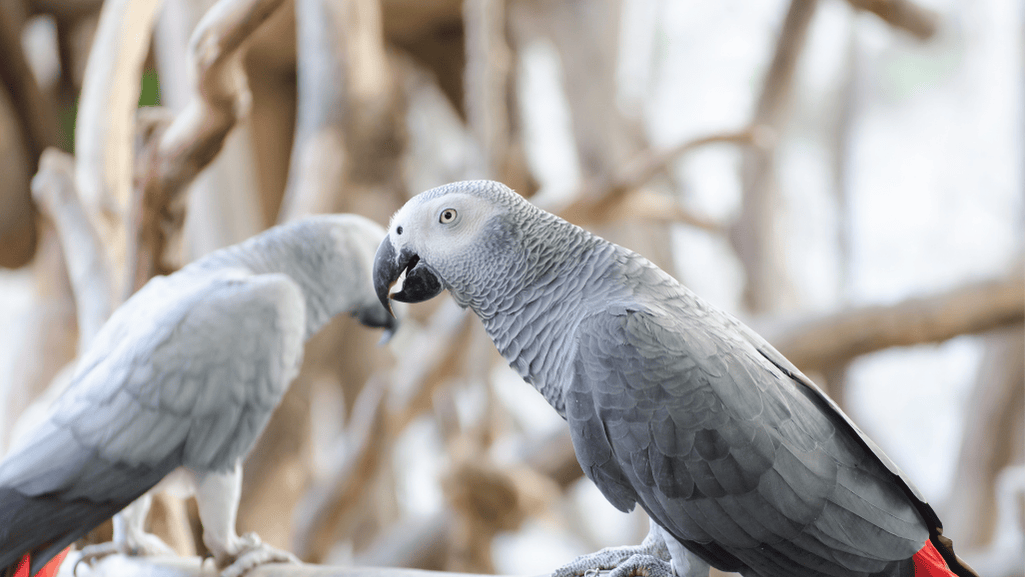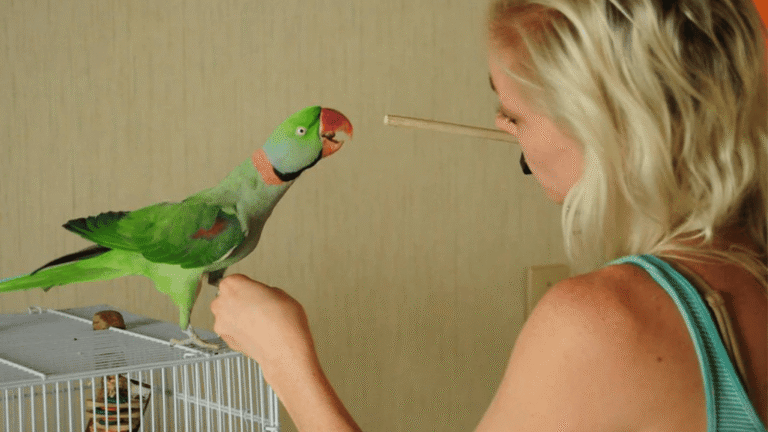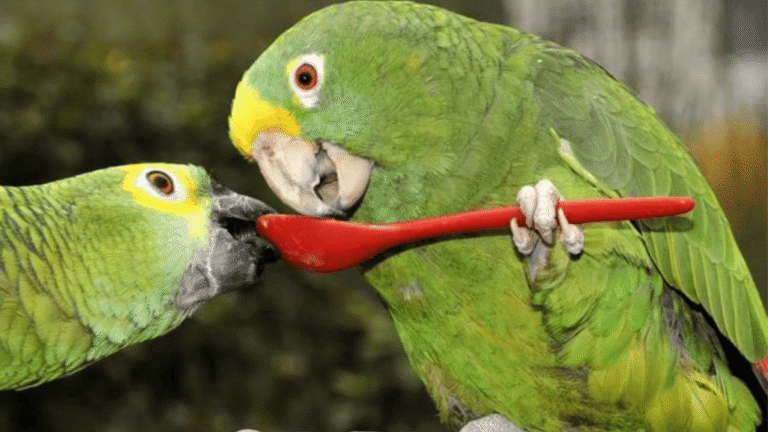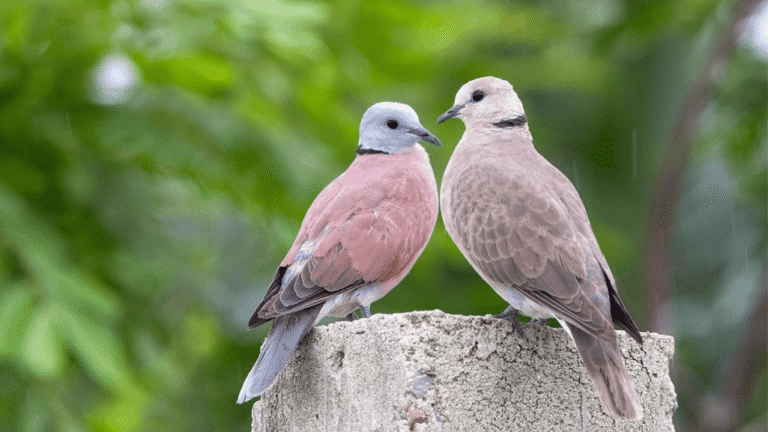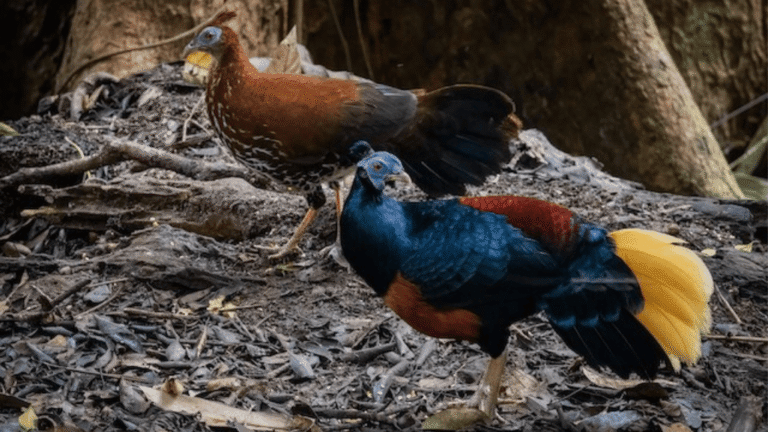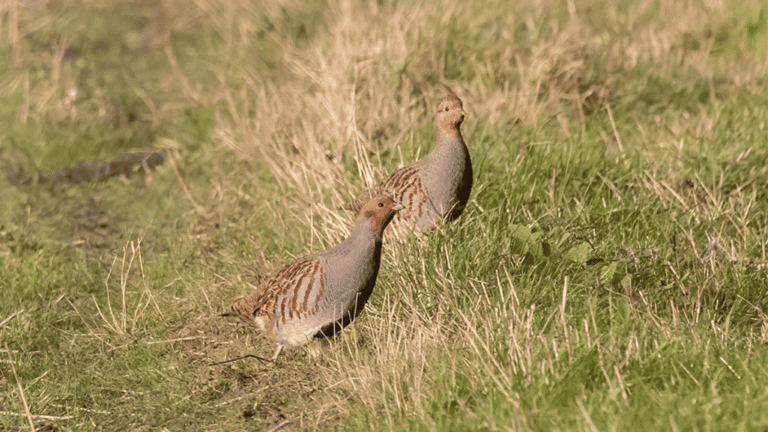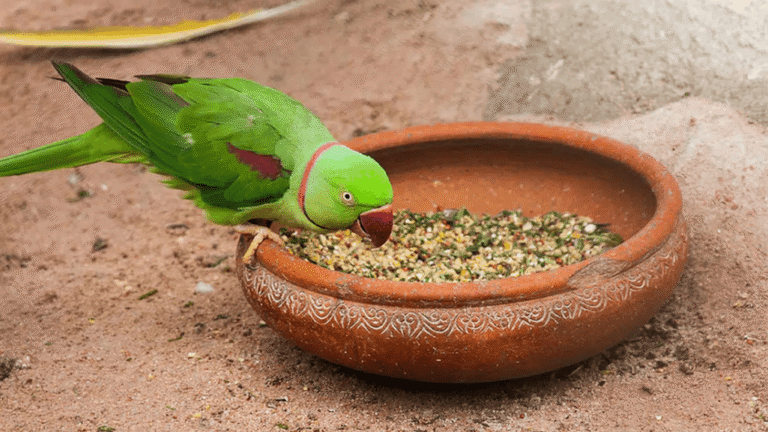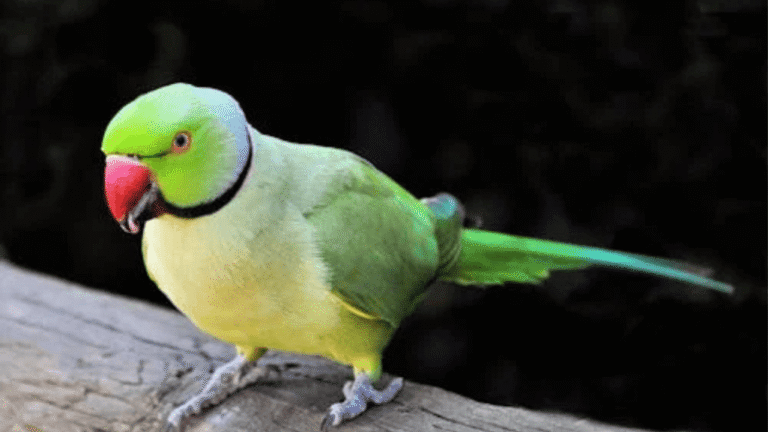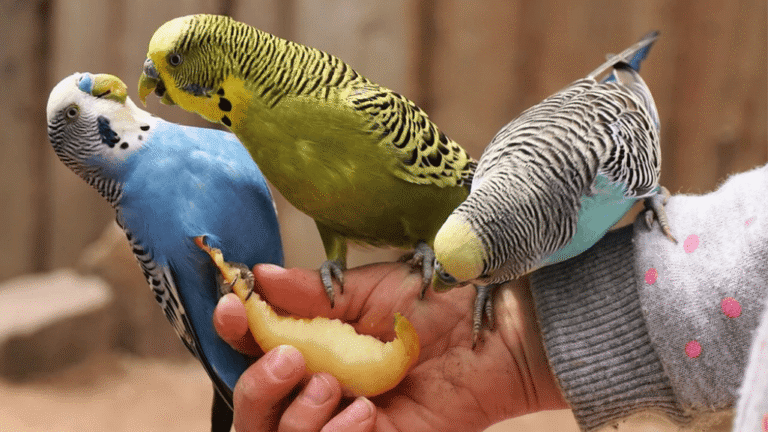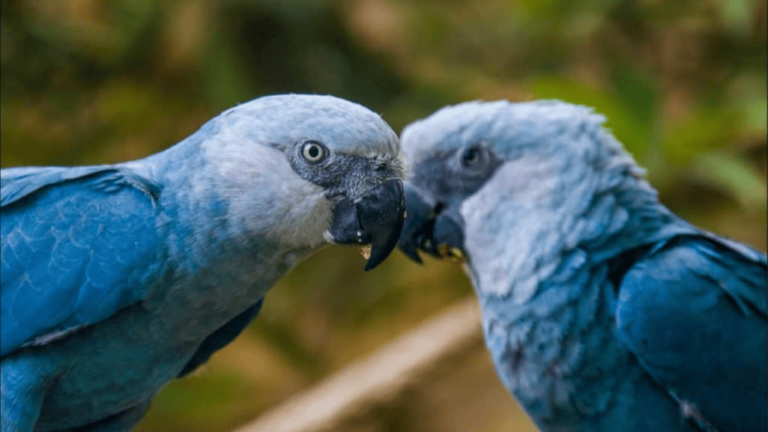Get ready to be amazed by the African grey parrot. These birds are known for their smartness and ability to talk like humans. They can learn lots of words and solve problems, making them great pets for those looking for something special.
African grey parrots are loved worldwide as pets. They have beautiful silver-grey feathers and bright red tails. They are as smart as young kids. When you get an African grey parrot, you’ll form a deep bond with them. This bond is based on trust and endless curiosity.
Keeping an African grey parrot as a pet is a big commitment. They can live for 50 years or more. You’ll see them learn and grow, mastering new words and even conversations. With patience and care, you’ll have a relationship that’s both rewarding and fun.
Key Takeaways
- African grey parrots are among the most intelligent bird species, with problem-solving skills and the ability to learn extensive vocabularies.
- These birds form strong bonds with their human companions, requiring dedication and long-term commitment.
- Proper nutrition, housing, and mental stimulation are essential for the well-being of African grey parrots.
- African grey parrots can live for several decades in captivity, with some individuals reaching 50 years or more.
- Caring for an African grey parrot is a rewarding experience that leads to a deep and fascinating connection between bird and owner.
Introducing the African Grey Parrot
The African grey parrot is loved by many for its smartness and ability to mimic sounds. It has a long history with humans, dating back to biblical times. These parrots live in West and Central Africa, enjoying different environments like savannas and forests.
Origins and Natural Habitat
African grey parrots live in the equatorial regions of Africa. They can be found in various places, showing their ability to adapt. But, their numbers are dropping due to habitat loss and the illegal pet trade. The International Union for Conservation of Nature (IUCN) has listed them as endangered, highlighting the need for conservation.
“The African grey parrot is a testament to the incredible diversity and beauty of the avian world. As we work to protect these remarkable birds, we must also strive to understand and appreciate the intricate web of life that sustains them.” – Dr. Jane Goodall, primatologist and conservationist
Physical Characteristics and Subspecies
African grey parrots are medium-sized, measuring 28 to 33 centimeters long and weighing 400 to 500 grams. They have grey feathers, with red tails and white masks. These features make them stand out among parrot lovers.
There are two subspecies: the Congo African grey and the Timneh African grey. The Congo African grey is larger, with a darker grey color and a bright red tail. The Timneh African grey is smaller, with a lighter grey color, a darker maroon tail, and a smaller black beak.
| Characteristic | Congo African Grey | Timneh African Grey |
|---|---|---|
| Size | Larger, 33-36 cm | Smaller, 28-30 cm |
| Plumage | Darker grey | Lighter grey |
| Tail Color | Bright red | Darker maroon |
| Beak | Larger, black | Smaller, black |
Both subspecies are known for their intelligence, adaptability, and ability to mimic human speech. This has made them beloved companions and subjects of scientific study for centuries.
Exceptional Intelligence and Cognitive Abilities
African grey parrots are known for their amazing intelligence. They are as smart as some primates and young children. A Harvard study showed one named Griffin doing better than kids and apes in tests. He understood things like certainty and possibility.
These parrots have big brains for their size. This helps them solve problems and use tools. They are curious and love to explore, which makes them even smarter.
Problem-Solving Skills
African grey parrots are great at solving problems. They can figure out complex puzzles and use tools to get food. Their smart thinking shows how adaptable and intelligent they are.
Memory and Learning Capacity
These parrots remember a lot and learn fast. Some learn hundreds of words. They understand what these words mean and use them correctly.
Studies say they are as smart as a four-year-old. They can do simple math and count up to 8. This shows their advanced thinking skills.
| Cognitive Ability | African Grey Parrot | Human Child (4 years old) |
|---|---|---|
| Vocabulary | Can learn hundreds of words and phrases | Vocabulary of around 1,500 to 2,000 words |
| Problem-Solving | Can use tools and understand cause-effect relationships | Developing problem-solving skills through play and exploration |
| Memory | Exceptional memory retention and recall | Rapidly developing memory skills |
| Reasoning | Comparable to a four-year-old child | Developing logical thinking and reasoning abilities |
Studying African grey parrots is fascinating. Their intelligence and memory challenge what we thought about birds. They show us the amazing abilities of animals. As we learn more about parrots, they inspire us with their incredible minds.
Mastering Human Speech and Mimicry
African Grey parrots are known for their amazing ability to mimic human speech. They are among the most popular talking birds. These smart birds can learn and repeat many words after hearing them just a few times.
As mentioned in this article, African Greys usually start talking around one year old. Many of them show off their skills even earlier.
Teaching an African Grey to talk needs patience, consistent parrot training, and positive feedback. Owners should repeat words and phrases clearly and often. This helps the birds learn more words.
It’s also important to create a supportive environment. African Greys love to interact and learn. They do best in places where they feel loved and challenged.
Research shows that African Grey parrots not only mimic words but also understand them. A study looked at how an African Grey parrot talks in different situations:
| Social Context | Total Unit Frequency | Vocabulary Richness |
|---|---|---|
| Home alone | 1,324 | 138 |
| With owner in the room | 2,187 | 184 |
| Owner in separate room | 1,792 | 162 |
| Owner and experimenter conversing | 897 | 97 |
The study found that the parrot’s talking and vocabulary changed based on who was around. When the owner was there, the parrot was more likely to talk. This shows how much they value interaction.
When the parrot and owner were apart, the bird used words that seemed like calls from the wild. This shows how smart they are at adapting their speech.
The parrot’s vocal repertoire consisted of 278 units ranging from 1-8 words long, demonstrating the complexity and diversity of their speech patterns.
This study highlights the importance of social interaction in teaching talking parrots to speak. As mentioned in this guide, African Greys bond strongly with humans. This bond helps them learn and communicate better.
In summary, African Grey parrots are incredibly gifted talking birds. With the right training, socialization, and environment, they can become wonderful companions. They bring joy and intelligence into our lives.
African Grey Parrot’s Social Nature
The African grey parrot is very social, both in the wild and as a pet. In their natural home, they live in big groups, sometimes with up to 10,000 birds. They also love to be around their human friends and enjoy lots of attention.
Interaction with Human Companions
African grey parrots need to be with people a lot to stay happy and healthy. They are very smart and need to keep their minds busy. Playing with them, training, and just hanging out are key to a good relationship.
Even though they love to be around people, they might not always want to cuddle. They can handle some head scratches and petting but don’t like too much touch. It’s important to know what they like and don’t like.
Bonding and Emotional Connection
African grey parrots can really connect with their owners. They are very aware of their surroundings and can sense how their owners feel. They often choose one person to be their favorite, even if others play with them too.
To make a strong bond, give your African grey lots of care and mental challenges. Play with them, give them puzzle toys, and teach them new things. This way, you’ll have a loyal and loving friend for many years.
African grey parrots can live up to 80 years. This shows how big a commitment they are for a long time.
In short, African grey parrots are very social and need lots of interaction. By giving them lots of attention, mental challenges, and bonding time, they will be happy and a big part of your family.
Caring for an African Grey Parrot
Welcoming an African Grey Parrot into your life is exciting and rewarding. These birds are among the most intelligent and engaging psittacine pets. They need dedicated care and attention to thrive. By providing a nurturing environment, a balanced diet, and mental stimulation, your feathered friend will stay healthy and happy for years.
Diet and Nutrition
A well-balanced diet is key for parrot health. African Grey Parrots need a diet rich in high-quality pellets, fresh fruits, vegetables, and some healthy seeds. Include dark leafy greens, beta-carotene-rich veggies, and antioxidant-packed berries. Avoid chocolate, avocado, and caffeine. Talk to your vet to create a meal plan that fits your parrot’s needs.
| Diet Component | Percentage |
|---|---|
| Formulated Diets (Pellets) | 75% |
| Dark Leafy Greens, Vegetables, and Fruits | 20-25% |
| Treats | Limited to 5% |
Housing and Environmental Needs
Creating a comfortable and stimulating space is crucial for your African Grey’s well-being. Choose a spacious cage that lets your parrot move freely and play. The cage should be at least 2 feet by 2 feet and 3 feet tall. Add perches, food and water dishes, and parrot toys for fun. Place the cage in a quiet area with a wall for security.
Mental Stimulation and Enrichment
African Grey Parrots need constant mental stimulation to avoid boredom and destructive behaviors. Rotate toys, puzzles, and foraging opportunities to keep their minds active. Hide treats in parrot toys or use food-dispensing devices. Spend time each day with your parrot through training, conversation, and play outside the cage. This will strengthen your bond and support their cognitive and emotional health.
“The key to successful bird care is understanding and meeting the unique needs of your African Grey Parrot. With patience, love, and a commitment to their well-being, you’ll be rewarded with a loyal and loving companion for life.”
Remember, avian care is a lifelong commitment. Stay informed, work with an experienced avian vet, and dedicate yourself to your African Grey’s happiness and health. This will create a fulfilling and enriching life together.
Training and Behavioral Management
African Grey Parrots are known for their smartness. But, this intelligence can sometimes cause problems. They are very sensitive and like their routines. Even small changes can upset them, leading to behaviors like feather plucking or chewing too much.
It’s important to train your bird well and understand their behavior. This helps keep a good relationship with them.
Training a parrot needs patience, consistency, and knowing what they need. Many issues come from owners not knowing enough about parrots. Parrots are demanding, loud, social, and smart. They can make a mess and damage things if not cared for right.
“The most common questions I receive have nothing to do with advanced trick training or flight. Instead, they focus on the basics of parrot care and behavior management.”
Recently, there’s been a big change in how we handle parrot behavior problems. Now, we focus more on fixing relationship issues than just fixing the behavior. This way, we can manage behaviors like chewing, loud noises, biting, and throwing food better.
| Training Step | Description |
|---|---|
| Getting Parrot Into the Cage for the First Time | Use gentle encouragement and positive reinforcement to help your parrot feel comfortable entering their cage. |
| Getting Parrot Out of the Cage for the First Time | Establish trust and create a safe, inviting environment to encourage your parrot to venture out of their cage. |
| Teaching Parrot to Step Up | Patiently teach your parrot to step onto your hand or a perch on command, using positive reinforcement and rewards. |
| Basic Taming and Handling | Gradually acclimate your parrot to human touch and interaction, building trust and a strong bond over time. |
Preventing problems is the best way to handle parrot behavior. Knowing about parrots before getting one is crucial. By setting the right expectations, caring for them well, and spending time training and socializing, you can have a wonderful relationship with your African Grey Parrot.
African Grey Parrot Health and Longevity
African Grey Parrots are loved for their smarts, looks, and long lives. With the right care, they can live many years in captivity. It’s important to know about common health issues and how to prevent them to keep these birds happy and healthy.
Common Health Issues
Even though they are tough, African Grey Parrots face many health problems. Some common issues include:
- Feather picking and self-mutilation
- Calcium and vitamin deficiencies (especially vitamin A and D)
- Respiratory infections
- Psittacosis (parrot fever)
- Psittacine beak and feather disease (PBFD)
- Obesity and fatty liver disease
- Behavioral problems from lack of socialization or mental stimulation
It’s key for owners to know about these health risks and watch their birds closely. Catching illness early and getting vet help quickly can help a lot.
Preventive Care and Veterinary Check-ups
Keeping African Grey Parrots healthy is all about preventive care. Taking them to the vet once a year is crucial. This helps catch health problems early and ensures they get the right care.
At these visits, your vet will check your bird thoroughly. They’ll look at your bird’s overall health and suggest ways to keep them well.
Along with vet visits, a balanced diet and a fun, safe home are key. A diet full of fresh fruits, veggies, and good pellets helps avoid health issues. It’s also important to keep them active and mentally sharp.
Make sure their home is safe and fun. This means a big cage, different perches, and lots of toys and puzzles. Spending time with them and letting them out of their cage also helps keep them happy and healthy.
| Factor | Impact on Longevity |
|---|---|
| Proper Nutrition | Essential for maintaining health and extending lifespan |
| Veterinary Care | Regular check-ups and prompt treatment of illnesses |
| Living Environment | Spacious cage, appropriate perches, and enrichment toys |
| Socialization | Interaction with humans and other birds reduces stress and promotes well-being |
| Mental Stimulation | Training, puzzles, and interactive play keep parrots mentally engaged |
By focusing on health, regular vet visits, and a caring home, owners can help their African Grey Parrots live long, happy lives. With a lifespan of 50 to 60 years, and some living up to 70, they are true friends for life.
Conservation and Threats in the Wild
The African grey parrot is one of the smartest parrot species. It faces big challenges in its natural home. It’s important to know the threats they face and the efforts to protect them.
African grey parrots have seen huge drops in numbers. In some African countries, their numbers have fallen by up to 90%. Ghana has seen a 99% drop since 1992. The main reasons are habitat loss, illegal trade, and fragmentation.
Habitat Loss and Fragmentation
As humans expand, forests are cleared for farming and buildings. This takes away African grey parrots’ homes. Their habitats are broken up, making it hard for them to live and find places to nest. Saving their homes is key to their survival.
Illegal Trade and Poaching
The illegal trade of African grey parrots is a big threat. These smart birds are wanted as pets. In one West African market, up to 900 endangered African grey parrots have been traded in the last ten years.
Poachers catch these birds, often cruelly, and smuggle them. Many die on the way due to bad conditions and stress. But, better care for seized birds has improved their survival chances.
| Threat | Impact |
|---|---|
| Habitat Loss | Difficulty maintaining populations and finding suitable nesting sites |
| Illegal Trade | Up to 900 endangered African grey parrots traded at a single West African market over the past decade |
| Population Decline | Up to 90% decline in some African countries, with Ghana experiencing a 99% decline since 1992 |
It’s important to protect African grey parrots and their homes. Governments, groups, and people are working together. They are making laws stricter, enforcing them, and raising awareness to lower demand for wild parrots.
Donations are key in fighting wildlife trafficking and caring for seized parrots. It can take up to six months to rehabilitate them before they can be released.
By supporting conservation, we can ensure future generations see African grey parrots in their natural habitat. Together, we can protect these amazing birds and their homes.
Choosing an African Grey Parrot as a Pet
Getting an African grey parrot as a pet is a rewarding experience. They bring companionship, intelligence, and a unique personality. But, it’s important to think about the responsibilities and commitments of owning a pet parrot.
Considerations and Responsibilities
African grey parrots need a lot of time, effort, and resources. They are social and intelligent, so they need lots of interaction and mental stimulation. A balanced diet, spacious housing, and regular vet visits are key to their health. Plus, they can live up to 50 years or more, making them a big commitment.
Before getting an African grey parrot, ask yourself:
- Do you have enough time and patience for daily care?
- Can you provide a safe, spacious place for flying and exploring?
- Are you ready to give a varied, nutritious diet and mental stimulation?
- Can you commit to caring for your parrot for many years?
Adopting vs. Purchasing from a Breeder
You can get an African grey parrot by adopting or buying from a breeder. Each option has its own benefits and things to consider.
| Adopting from a Rescue | Purchasing from a Breeder |
|---|---|
| Provides a loving home to a parrot in need | Allows for selection of a young bird for easier bonding and training |
| May come with unknown history or behavioral challenges | Offers a known health and genetic background |
| Often less expensive than purchasing from a breeder | Supports responsible breeding practices and conservation efforts |
| Requires patience and understanding to help the parrot adjust | Allows for early socialization and adaptation to family life |
Proper socialization and early human interaction are crucial to prevent behavior problems in African grey parrots.
The choice between adopting or buying should match your situation and commitment. Research, preparation, and understanding African grey parrots’ needs are key for a happy partnership.
Conclusion
The African Grey parrot is a remarkable companion. They amaze bird lovers and researchers with their intelligence and striking looks. These parrots are popular pets because they can mimic human speech and solve problems.
They also form deep bonds with their owners. To keep them happy, it’s important to give them a balanced diet and a big, enriching space. They need regular social time and good vet care too.
By understanding their needs, owners can make their lives fulfilling. For more info on caring for African Grey parrots, check out Parrot Junkie.
In the wild, African Grey parrots face many dangers. These include losing their homes and being caught for the pet trade. We must help protect them and their habitats.
By learning about their struggles and supporting conservation, we can help. For those interested in other parrots, Birds Rabeya Pet has info on Turquoise Fronted Amazons.
As we learn more about African Grey parrots and other birds, we see their incredible abilities. They teach us about intelligence, communication, and the bond between humans and animals. By loving and caring for them, we get to share our lives with these amazing creatures.


